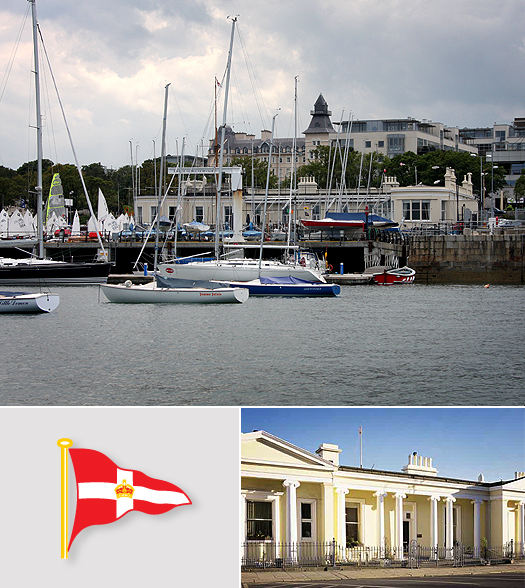Displaying items by tag: Royal St George Yacht Club
Youths Gather for Bay Event
This May Bank Holiday weekend (01-03 May 2010) over 300 boats from seven different classes will race on three separate courses in Dublin Bay. The format for this year’s event is based on that of the ISAF Youth World Championships which will be hosted by Dublin Bay in 2012.
Many of the junior sailors who will be targeting qualification for the 2012 Youth Worlds will be competing in the Optimist Class at the Mitsubishi Championships as sailors must be under 18 years of age in 2012 in order to qualify. There will be over seventy Optimists competing for this years World, European, and Under 12 squads.
The Laser Radial, Laser 4.7 and 420 Classes will also be fighting it out for Irish team places too with the prestigious 2010 ISAF slots also up for grabs. The 2010 ISAF Youth Worlds will be held in Istanbul in July and Ireland will be represented at this event by the leading sailors in all 3 classes.
The Junior Pathway classes, Topper’s and RS Feva’s will also compete along with the SL 16 catamaran which makes its debut on the bay in preparation for 2012 where it will be a class. The introduction of the SL class two years in advance offers sailors a fresh opportunity to train and qualify in this new class to Ireland.
www.dublinbay2012.com has been set up by the organisers to assist sailors and clubs to prepare for the prestigious Youth Worlds. Full details of all pre-event activities are available on this site including a link to the Mitsubishi Motors Youth Championships 2010.
ICRA Entry Approaches 100
ICRA are reporting its national sailing championships entry is approaching the 100-mark nearly two months out from the event, the first big regatta of the sailing season.
The Liebherr Cruiser Nationals to be held in Dun Laoghaire from May from May 21st to 23rd and hosted by the Royal St. George Yacht Club, has already attracted very strong support. ICRA are delighted to report that already entries are almost at the 100 mark and expected to reach record numbers despite the current economic environment. The formula for the event will be a three-day championship with seven races.
There will be a variety of tight Windward/Leeward and Olympic type round the cans courses in two separate specially designated areas. The combination of the National Championships title at stake and an excellent social programme ashore has proved to be a great success. The fact that the event rotates locations has also added to its stature.
With the excellent racing and onshore entertainment planned by the Host Club, the Royal St. George, and in conjunction with the strong sponsors, Liebherr, The Royal Marine Hotel, Dun Laoghaire and Dubarry Footwear and Clothing, a very special festival of sailing plus a strong welcome for all competitors is assured. The inaugural ICRA Corinthian Cup for non-spinnaker boats is also being well supported with 17 entries already recorded. This event will be sailed on a separate course. Early entry is encouraged so that final Class Bands can be fairly decided.
Royal St. George Yacht Club

History
The Kingstown Boat Club, from which the Royal St. George Yacht Club evolved, was founded in 1838 by a small group of boating enthusiasts who had decided that ‘the (River) Liffey was every year becoming fouler and less agreeable for aquatic pursuits’.
They applied to the Commissioner for Public Works, and were granted a piece of ground near Dun Laoghaire Harbour on which to build a clubhouse – the first privately owned building to stand on publicly owned space. Initially, the members’ main interest was in rowing, but membership grew rapidly, and amongst them were many well-known yachtsmen of the day.
One of these was the Marquis Conyngham, who used his influence with Queen Victoria to have the privileges of a Royal Yacht Club conferred in 1845. The Club flag was to be 'the Red Ensign with a crown in the centre of the Jack' and the Burgee was red with a white cross with a crown at the centre. This, of course, is the St. George’s Cross, and is quite possibly the reason why, in 1847, the Club became The Royal St. George’s Yacht Club, although this has never been established. It subsequently became the Royal St George Yacht Club; it is referred to by all who know it, as simply ‘the George’.
Click for the latest Royal St.George Yacht Club news
The Clubhouse
The clubhouse was designed by Mulvany, a follower of Gandon, designer of the Custom House in Dublin, and he produced a beautiful miniature Palladian villa in the neo-classical style.
The builder was Masterson, who built many other beautiful houses in the neighbourhood, including Sorrento Terrace, Dalkey. Work was completed in 1843, but, incredibly, such was the growth in membership, that the clubhouse was already too small. Permission was granted by the Harbour Commissioners in 1845 for an extension of the original façade, which involved clever duplication of the existing Ionic portico with the erection of a linking colonnade between. The symmetry and classical grace of the clubhouse was thus preserved in the new building.
The George has a long tradition of racing and cruising, and members have, from the start, made their mark in home and international waters. In 1851, the Marquis Conyngham, Commodore, competed in his 218 ton yacht Constance in the Royal Yacht Squadron Regatta. An American yacht called America won the race! In 1893 William Jameson, of the eponymous distilling family, was asked by Edward, Prince of Wales, to be sailing master on his new yacht Britannia. He won 33 out of 43 starts in her first season.
In 1963 a major restoration project was undertaken to repair and update the Club’s facilities, and this attracted a large number of new members who were ultimately to pave the way for the later developments, including a much-envied multi-purpose club room, a state-of-the-art forecourt extension for dinghies and keelboats, and a fully-equipped dock.
2008 saw the culmination of five years of planning and building when the new sailing wing was opened for use. Consisting of a new junior room, racing office, committee room and administration office this area is joined to the older builing with a lovely light-filled atrium. Stylish and functional changing facilities for the ladies and upgraded male changerooms have increased the club’s capacity to accommodate larger numbers of sailors for world-class events. A refurbishment of the Clubroom further complimented this full-service sailing section and has elevated the Club’s status resulting in it being chosen to host the 2012 ISAF Youth World Championships.
(Details and image courtesy of the Royal St. George Yacht Club)
Royal St. George Yacht Club, Harbour Road, Dun Laoghaire, Co. Dublin, tel: +353 1 280 1811, fax: +353 1 280 9359
Have we got your club details? Click here to get involved





























































